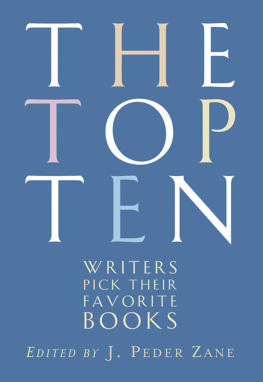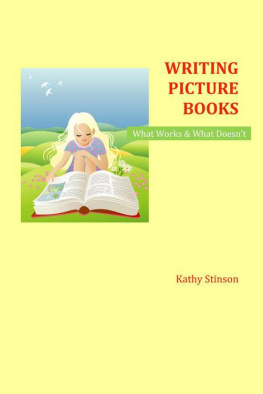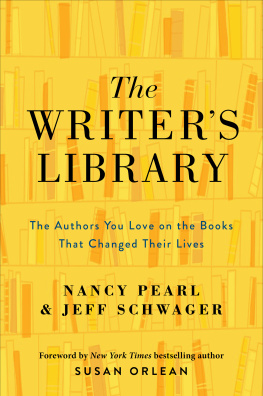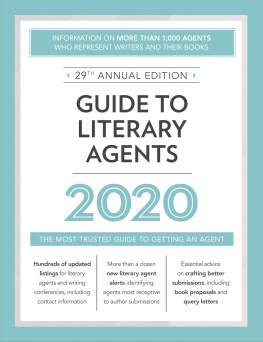Edited by J. Peder Zane
W. W. NORTON & COMPANY
Copyright 2007 by J. Peder Zane
Essays copyright by the individual authors and
reprinted with permission
W. W. Norton & Company, Inc., 500 Fifth Avenue, New York, N.Y. 10110
www.wwnorton.com
W. W. Norton & Company Ltd.,
Castle House, 75/76 Wells Street, London W1T 3QT
INTRODUCTION
J. PEDER ZANE
This book began with a dream.
Im on a deserted islandlots of sand, single palm tree, you know the drill. Food and fresh water seem pretty scarce but what I really need is a good book. Suddenly, one drops from the sky. Thud! As I bend to lift it, I hear another thud. Then another. And another until I cant see the tree for all the books, which have turned my little isle into a Tower of Biblio-Babel.
Buried in books Im awash in confusion: Where to begin?
Boom, Im awake and I decipher my dream lickety-split. That sense of overwhelming possibility was all too familiarits the same feeling I get whenever I step into a megastore bursting with thousands of titles or click into an online retailer offering access to millions of works.
This is the yin and yang of the modern reader: opportunity and befuddlement.
We live in a Golden Agenever before have so many books been within such easy reach. But when anything is possible, choice becomes torture. What to pick? Where to start? This one? That one? How about thisand that? What will I like? Whats worth my time?
Help!
In response, various voices have emergedfrom Oprah Winfrey to the book club craze she sparkedto provide readers direction as they navigate this book-rich world.
But these sources take us only so far. They offer signposts but not detailed road maps to the land of literary possibilities. The Top Ten fills this gap. Part Rand-McNally, part Zagats, part cultural Prozac, it takes the anxiety out of bibliophilia by offering a comprehensive and authoritative guide to the worlds best books.
Its premise is simple: Who knows more about great books than great writers? Where previous surveys have queried small groups of authors, The Top Ten draws from the responses of 125 leading British and American authors who were asked to provide a list, ranked, in order, of what you consider the ten greatest works of fiction of all timenovels, story collections, plays, or poems.
There were no limits. The participants could pick any work, by any writer, from any time period. Though The Top Ten focuses on fiction, a few writers insisted on including works of nonfiction and, well, its their list.
After awarding ten points to each first-place pick, nine to second-place picks, and so on, the results were tabulated to create the Top Top Ten listthe very best of the very best.
It was a horse race straight out of Lewis Carroll: Anna Karenina s out front, Madame Bovary s on her shoulder, Lolita is starting to make a move, and here comes Moby-Dick charging hard from the outside.
However, The Top Ten is not trying to anoint a canon. Its message is not: Here are the only ten books you need to read. Instead it points you toward the many fine books awaiting your discovery, highlighting a multitude of books, each and every one of which is worth your time .
The lists name 544 separate titles, ranging from the plays of Kenneth Koch to the mysteries of Georges Simenon to the poetry of Joy Harjo to the novels of Stephen King and Jane Austen. If you start today and read a book a week, it will take eleven and a half years to read them all.
That sounds daunting, but think of it like this: The Top Ten offers eleven and a half klunker-free years of reading pleasure; 544 books, each of which is considered to be among the ten greatest books ever written .
Best of all, it passes the telephone book test: Close your eyes, open the book, place your finger on the page. Read that book youre pointing to: Its a winner!
One book readers may want to spend some time with is The Top Ten itself, which is both a guide to great booksincluding brief descriptions of every work listedand a wellspring of surprising statistics that can make literature seem like baseball.
Where to start? Begin with the lists themselves, which spark mind games (the good kind) both large and small.
Taking a big-picture view in his essay on the Top Top Ten list, Sven Birkerts observes that the biggest vote getters suggest the qualities that writers consider to be the essence of great writing. The collective preference, he writes, is clearly for memorable character-driven dramas of love and death delineated in sensuous, nuanced prose.
In another essay, David Orr suggests a more personal approachusing the lists as windows into their creators literary sensibilities.
Notice how some writers identified books that are clearly models for their own writings, while others selected works that seem straight out of literary left field. Some created objective lists filled with time-honored classics; others took a more subjective approach, choosing less-celebrated works that hold a high place in their own hearts. Robert Pinsky spoke for nearly everyone when he prefaced his list with these words: Ten works of fiction that have been great for me.
In fact, Pinskys words were some of the mildest I heard from the contributors. As I collected their lists, I began to feel like a sadistor at least a dentistfor the pain I was inflicting by forcing them to pick just ten books. List sired by Necessity upon Despair, wrote Fred Chappell. It is so limited , sighed Susan Minot. I know Im forgetting ones I really love, Peter Carey fretted. Lists, unless grocery shopping lists, are truly a reductio ad absurdum , quipped Annie Proulx.
Mary Gaitskill gives full throat to these concerns in her essay on the difficulties of picking just ten books from a vast array of ever-changing favorites.
And yet, the list makers persevered because their discomfort was not as strong as their generous desire to pay tribute to works that inspired them, hoping that they might inspire others. As Reynolds Price so eloquently stated: I dont offer these as the ten greatest novels.I do feel strongly, however, that there are few other substantial works of fiction from any culture known to me which equal these ten in the depth of their wisdom or the efficiency of their prose. I offer them in the hope of widening their readership.
Furthermore, the constraints placed on each writer seem to vanish when we consider all 125 lists. Expansive and inclusive seem the best adjectives, prompting us to imagine various methods for organizing the results.
An appendix makes a preliminary stab at tabulating, ranking, collating, and cross-referencing these literary milestones. It includes two lists of the top ten authorsone based on whose books earned the most points, the other reflecting who had the greatest number of titles mentioned (Shakespeare in a landslide!).
Other tallies identify the top ten works of the twentieth century, the top ten American novels, the top ten mysteries and thrillers, and the top ten comic novels.





